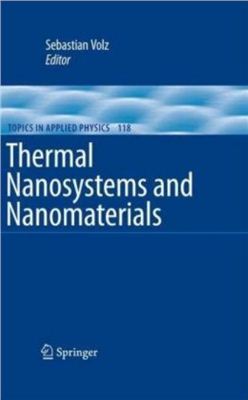Springer-Verlag, Berlin, 2009, 587 pages
Heat transfer laws for conduction, radiation and convection change when the dimensions of the systems in question shrink. The altered behaviours can be used efficiently in energy conversion, respectively bio- and high-performance materials to control microelectronic devices. To understand and model those thermal mechanisms, specific metrologies have to be established. This book provides an overview of actual devices and materials involving micro-nanoscale heat transfer mechanisms. These are clearly explained and exemplified by a large spectrum of relevant physical models, while the most advanced nanoscale thermal metrologies are presented.
This book brings together a quite remarkable overview of the state of the art, producing a continuous spectrum of subjects that broadly covers all the various fields of application of nanoscale heat transfer from solid state physics to biology. Such a perspective should be useful for doctoral students wishing to obtain their own general awareness of the specific themes discussed here. But it should also provide a way for practising research scientists to enter this particularly rich area of investigation, deepening and broadening their own skills or making their own contribution to the field.
Heat transfer laws for conduction, radiation and convection change when the dimensions of the systems in question shrink. The altered behaviours can be used efficiently in energy conversion, respectively bio- and high-performance materials to control microelectronic devices. To understand and model those thermal mechanisms, specific metrologies have to be established. This book provides an overview of actual devices and materials involving micro-nanoscale heat transfer mechanisms. These are clearly explained and exemplified by a large spectrum of relevant physical models, while the most advanced nanoscale thermal metrologies are presented.
This book brings together a quite remarkable overview of the state of the art, producing a continuous spectrum of subjects that broadly covers all the various fields of application of nanoscale heat transfer from solid state physics to biology. Such a perspective should be useful for doctoral students wishing to obtain their own general awareness of the specific themes discussed here. But it should also provide a way for practising research scientists to enter this particularly rich area of investigation, deepening and broadening their own skills or making their own contribution to the field.

